$0 Inbound Marketing Strategies
Feb 08, 2021

How can you create inbound marketing for literally no money? Nivas Ravichandran, Lead of the Startup Program at Freshworks — a Techstars Global Network Partner, has six steps that will get your customers' attention - and won't cost a thing.
If you’re a rookie entering a competitive market, you want to make every dollar count. You can’t be a category disruptor by simply buying your way into the market with ads. Your competition is going to drive prices up, and this can become an expensive recurring cost for you.
So what do you do?
Let’s take an example. You’ve heard about Oatley, the Swedish oat-milk brand, haven’t you? It’s a classic example of a small brand that disrupted its way to popularity among the Swedish dairy mafia.
Here’s what they did. When the dairy lobby filed a lawsuit against Oatley’s slogan; It’s like milk, but made for humans, quoting that it posed a threat to regular cow’s milk, instead of stepping down, the Oatley team audaciously published its lawsuit online and in print publications, calling out the lobby as bullies. Oatley eventually lost the lawsuit. But its presence skyrocketed — it went from being just another vegan brand to a celebrity underdog.
Let’s take another example closer to home. Freshsales CRM (now Freshworks CRM) faced a similar challenge when it entered the CRM space. Many big league players, super crowded market, and high entry barriers. Simply generating leads wasn’t going to cut it. The team had to build a brand. It had to attract prospects by taking the thought-leadership route, because sales at the early stage was top heavy, where founders were making decisions.
What did we do?
We decided to build credibility through partnerships, content, and events. Given our lean budgets, we partnered with thought leaders in the sales and CRM space and rolled out many $0 inbound and outbound marketing strategies like creating listicles, putting together an online sales summit, and more.
The result? We grew from zero to 3,000 customers in two years.
With that in mind, in this article, let’s get into some very workable inbound strategies you can explore to become a category disruptor in your market.
01. Leverage External Thought Leaders To Create Valuable Content
Whether you do content series, webinars, or podcasts, your primary goal should be to create ample visibility with minimal effort.
For example, in our “Secret Sauce to Sales” series, we reached out to sales leaders in big league companies like Zoom, Evernote, Quora, and Lucidchart, and published sales and marketing related blogs based on insights from them.
A second strategy we adopted was to produce thought leadership webinars with prominent sales leaders in the industry.
Here’s what happened:
Beyond just marketing the content ourselves, the thought leaders themselves started spreading the word among their audience, and we gained visibility into their audience pool without much spending.
Many who were following these big brands began looking at our content and taking notes from the lessons shared in them. It resonated with them because these were challenges they were facing every day at their workplace.
It built credibility for us. Those who viewed the content on our site started perceiving us as a dependable product.
Pro Tip: If you’re a startup, many times top executives may not work with you. The workaround is to get functional leaders to begin with and work your way up.
That being said, you also need to ensure that your messaging to these leaders is right — personalized, relevant, and mutually beneficial whenever possible.
02. Create Content That Accelerates Decision Making for Prospects
SEO-driven industry pages can be a great way to improve search results and ease lead generation. For example, you can create industry pages around how your product or service will suit different industries.
Better search results means higher visibility and more leads. Moreover, instead of going through an elaborate process of reaching out to our sales team at the very first step, our top of the funnel prospects immediately got a fair idea about how our brand could help them solve their problems.
A second, and a widely used form of content you can create, is case studies. If you have a happy customer, even if they are a small company, get them to talk about it.
Keep one hack in mind though: Your headline can make or break the deal.
For example, we published a case study on Shortlist, a small SaaS startup based in California. Because we had a large pool of startup founders (prospects) in California, our headline was, “How California-based Shortlist cut costs by 50% and sustained growth with Freshsales.” Bringing ‘California’ to the fore not only grabbed people’s attention, it also showed up in search results effectively, thus creating more visibility.
When we got customers to share case studies in their networks, we got even higher visibility. Also, nothing gets more business like word of mouth from a customer.
03. Create Good Listicles
Listicles are like coffee at Starbucks. They are fast, convenient, and effective.
While listicles come with a fair share of detractors for being shallow and redundant, the key to making a listicle worthwhile is to keep your content useful, relatable, and filled with valuable takeaways.
For example, we did some research and identified the most active sales influencers and tracked what kind of posts they were sharing and connecting with. Using that data, we put together a listicle called “25+ sales influencers to follow on LinkedIn.”
Pro Tip: If you are including brands and individuals relevant to your industry in the listicle, request them to share the content with their audience. It will help generate higher visibility, and build credibility for your brand, given the positive reputations of those who are sharing it.
Examples of listicles you could create:
20 timeless books every marketer must read
10+ email marketing influencers to follow in 2020
10 CX leaders share how COVID-19 has changed support dynamics
04. Create Effective Guides For Your Audience At the N-1 Step
Create content that helps your prospects take the next step in setting up their business, and acts as one step before they need your product.
For example, in the CRM market, we realized that many of our prospects are just setting up their lead generation channels. We tapped into this audience by creating a detailed guide on “How to generate leads on Product Hunt.”
Once this content reached the right audience, it automatically turned their attention towards the brand that created the article.
Examples of guides you could create:
How to choose the best CRM for your business
How to lead a remote sales team during a pandemic
How to reduce email response times to customers
When we consume a good piece of content anywhere on the internet, and we gain value from it, we tend to dig deeper into the brand that created this content, which translates to a potential lead.
05. Create and Repurpose Searchable Content In Different Formats
Not everybody is going to spend an hour listening to your webinars or reading the long-form content you create. This is where breaking down the content you’ve created into different formats can be effective.
For example, you can take a good webinar and turn it into several short posts for quick consumption on social media, or as quick videos for LinkedIn, as snippets on Google, or even create anchor tags in your blog and share specific sections. Moreover, Google search for text content can be difficult to rank but might work for other types of content effectively.
Repurposing content into different formats helped us get our content and brand across to a larger audience in the medium they wanted to consume it in. Don’t expect your audience to come to you: go to them.
06. Lean On Product Review Platforms and Their Recognitions
Product review platforms like G2 Crowd or even Google Reviews play a crucial role in helping your prospects determine how good or bad your product is. It’s important that you keep a close watch over what your customers are saying about your brand on these platforms. Even better, get existing customers to share their positive reviews.
Platforms like G2 Crowd hand out badges every summer and winter for products based on their performance and reviews. If you have earned one, let your customers and prospects know that you have been recognized by creating content around it.
Being present in review platforms is not just about having your customers write positive feedback about your product. It’s also about making sure you can act quickly if you receive negative feedback or complaints.
Is there a strategy or technique that helped you generate inbound leads? Let me know by connecting with me on LinkedIn or write to me at nivas.ravichandran@freshworks.com.
Freshworks is a Global Network Partner with Techstars and provides $10,000 USD in credits on their customer engagement suite (CRM, Helpdesk, Live Chat) for all Techstars startups. Access the benefit through the Techstars Perks portal.
About the Author

Nivas Ravichandran
Nivas leads the Startup Program Initiative at Freshworks. Prior to this, he was taking care of marketing for the CRM product Freshsales at Freshworks. His expertise lies in generating B2B leads using low-cost channels. He has also executed multiple influencer marketing webinars and online events at Freshworks. Areas of Expertise: Marketing Webinars, Online Events, Influencer Marketing, B2B Lead Generation, Social Selling, SaaS Marketing.

